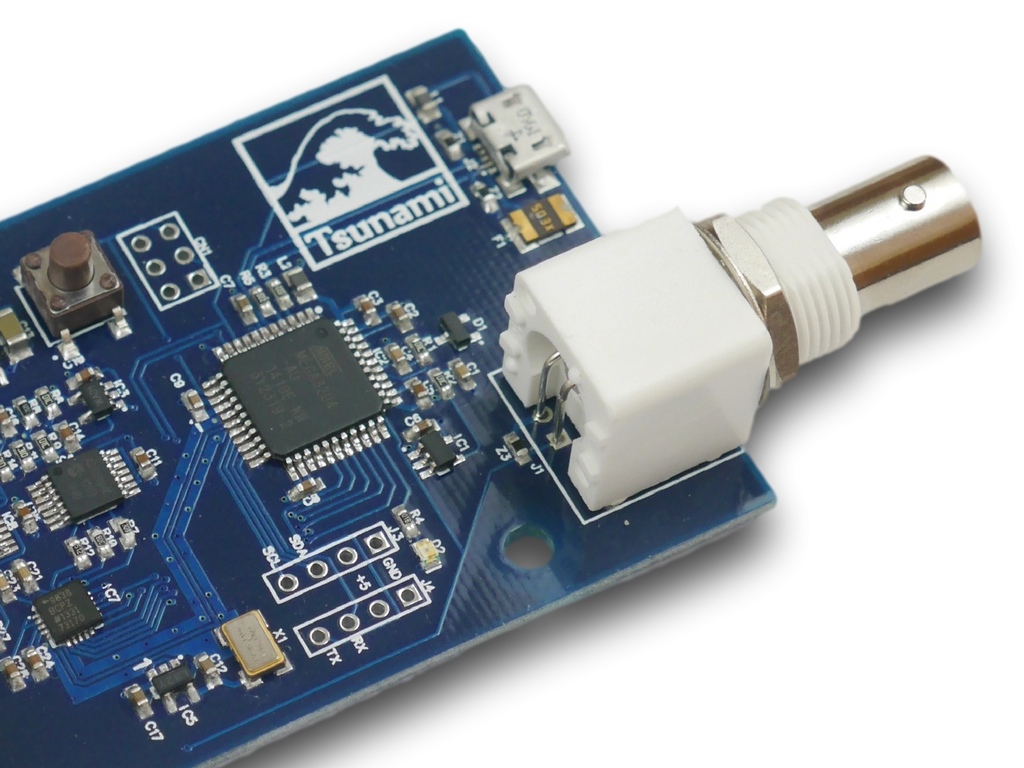- How to Adjust X and Y Axis Scale in Arduino Serial Plotter (No Extra Software Needed)Posted 2 months ago
- Elettronici Entusiasti: Inspiring Makers at Maker Faire Rome 2024Posted 2 months ago
- makeITcircular 2024 content launched – Part of Maker Faire Rome 2024Posted 5 months ago
- Application For Maker Faire Rome 2024: Deadline June 20thPosted 6 months ago
- Building a 3D Digital Clock with ArduinoPosted 11 months ago
- Creating a controller for Minecraft with realistic body movements using ArduinoPosted 12 months ago
- Snowflake with ArduinoPosted 12 months ago
- Holographic Christmas TreePosted 12 months ago
- Segstick: Build Your Own Self-Balancing Vehicle in Just 2 Days with ArduinoPosted 1 year ago
- ZSWatch: An Open-Source Smartwatch Project Based on the Zephyr Operating SystemPosted 1 year ago
Tsunami, open source Arduino signal generator on Kickstarter, last week!
The Tsunami is a powerful and flexible signal generator built on the Arduino platform. It’s the best way to get started experimenting with analog signals, and a great tool for a huge variety of tasks, too
Based on the versatile processor behind Arduino Leonardo, and combined it with a Direct Digital Synthesis chip, which makes generating analog signals incredibly straightforward. Then, we’ve added on flexible input and output circuitry, and an easy to use software library, to make working with analog signals as easy as blinking an LED.
The Tsunami’s most straightforward functions are frequency generation and counting. The Tsunami uses a high accuracy 2.5PPM (that’s 0.00025%!) crystal, which makes it an excellent tool to generate highly precise frequencies, as well as to measure them with great accuracy. For comparison, your typical “high quality” crystal is between 8 and 25 times less accurate!
With its highly accurate crystal, you can use the Tsunami to generate signals – sine, triangle, and square waves – all the way from DC up to around 2 megahertz. A versatile analog frontend allows you to adjust amplitude from 0 to 6 volts peak to peak, and DC offset by up to 2 volts either side of ground.
Likewise, the Tsunami can be used to measure signals. The processor used in Arduinos has a good quality ADC, but it’s slow, being limited to 15k samples per second. We’ve bypassed that limitation, equipping the Tsunami with a high speed comparator, allowing it to measure frequency, a peak detector, allowing it to measure signal amplitude, and a phase detector allowing it to, er, detect phase. All of these facilities work up to nearly 8 megahertz
What can I do with the Tsunami?
- Heaps! Here’s a few projects which could make use of the Tsunami:
- Use it as a building block for a synthesizer
- Measure unknown signals
- Measure the response curve of your audio amplifier
- Implement an APRS modem
- Generate precise clocks for other devices
- Make a digital theremin
- Read and write data tapes from classic computers (Commodore, Atari, etc)
- Test filters and reactive components (capacitors, inductors, and so forth)
- Encode and decode your own data for audio transmission
- Teach yourself about Direct Digital Synthesis
- Teach yourself about AC and complex impedance
- Make your own low frequency radio transmitter
We’ve put a lot of effort into making the Tsunami as simple to use as possible, with an easy to use Arduino library that covers all the Tsunami’s functions. Generating a sine wave, for instance, is as simple as telling the Tsunami what frequency you want.
full description here: Tsunami by Nick Johnson — Kickstarter.
















